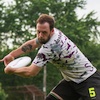Given how tight-knit the disc sport community is, ultimate players are more likely than most to discover and enjoy disc golf. Sometimes players are simultaneously disc golfers and ultimate competitors, others transition into disc golf when their bodies start protesting against the rigors of ultimate (e.g., Brodie Smith), and others take it up when the occasional global pandemic puts a stop to team sports.
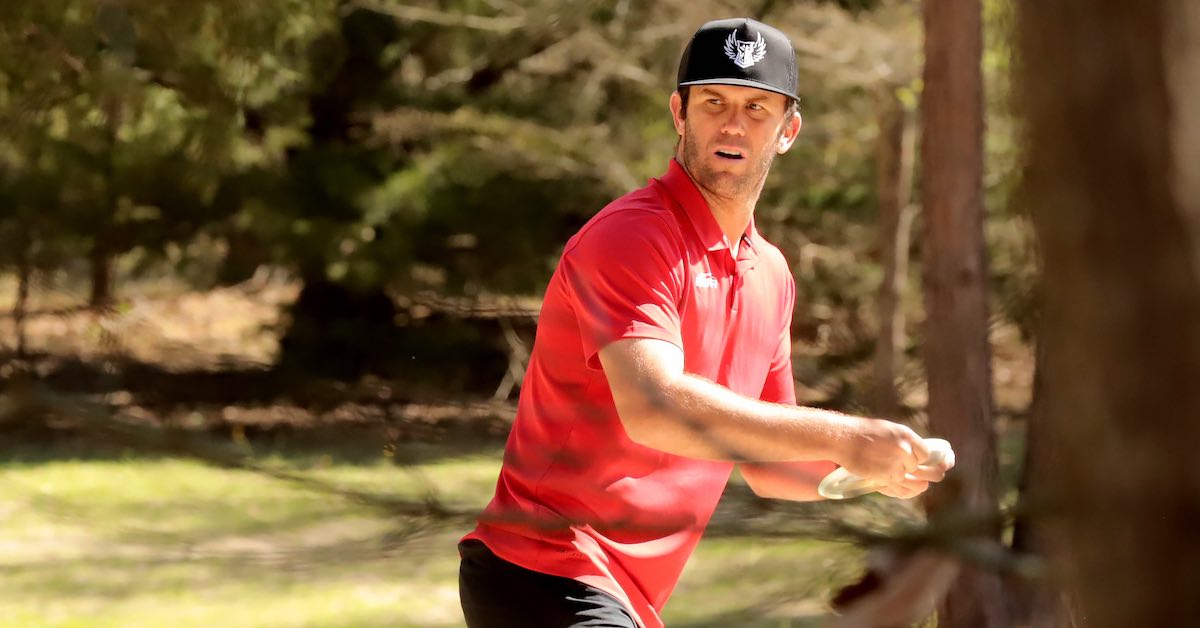
Though some skills from ultimate give people a leg up in disc golf, there's still plenty that players making the switch need to learn once they trade in well-worn cleats for skid-resistant shoes, Discraft Ultrastars for Innova GStars, and hyzer and anhyzer for outside-in and inside-out. High level pro disc golfers like Nate Sexton and Andrew Fish have proven that tweaking ultimate form and mechanics can result in success on the disc golf course, but it takes tons of work on things like throwing motion, release point, form, and mental game.
To help players improve their learning curves, we talked with ultimate-turned-disc golf players to find out what lessons they've gleaned as they've picked up their new sport. The players ranged from long time college competitors, to elite club, to professionals. Below you'll find the highlights of the advice and insights they shared along with our suggestions for relevant resources that could assist you even more.
Ultimate to Disc Golf: What's Different About the Discs?
Perhaps the biggest change ultimate players deal with when coming to disc golf is using a variety of discs with a variety of rim depths and flight characteristics. While it may be frustrating figuring out which discs do what at first, taking the time to understand your discs is vital to disc golf success.
This is something Leah Tsinajinnie pointed out. Tsinajinnie is a 12-year ultimate veteran who played at the elite and professional level with the Atlanta Ozone and Atlanta Soul before recently deciding to compete at big time pro disc golf events.
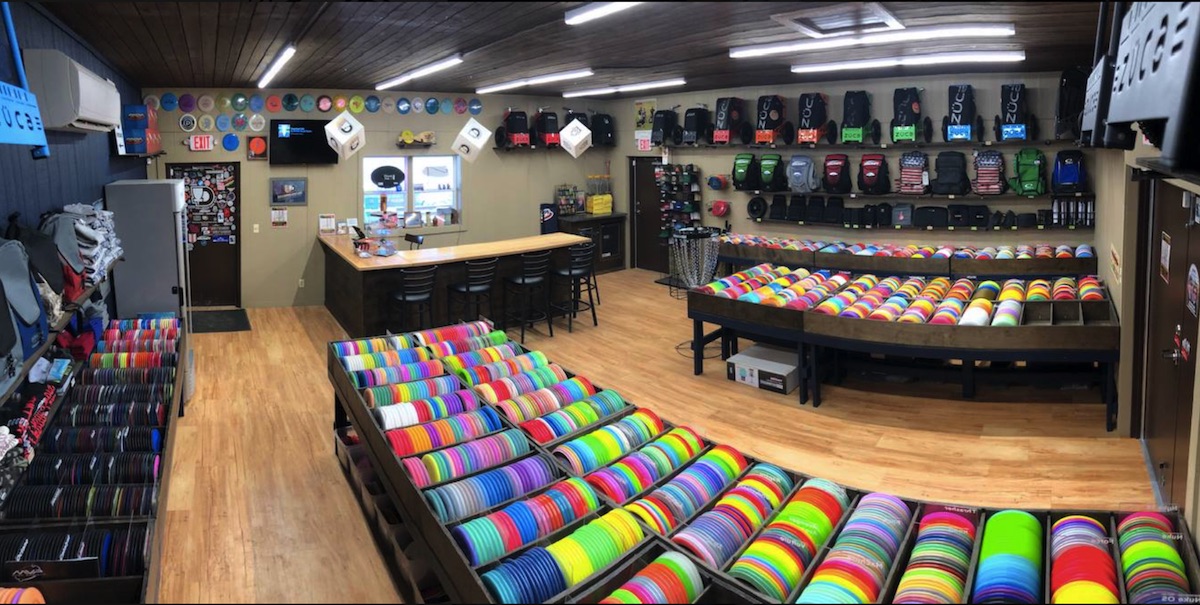
“In ultimate, I am doing all the work to make the disc do what I want it to do," said Tsinajinnie. “In disc golf, when I'm playing my best, the discs are doing all of the work for me. It is so important to understand your discs and their flight paths so that you can make the right disc selection and just let it fly."
Perhaps the most vital words to know when you search for discs are these: understable, stable, and overstable.
To help you out here, know that Ultrastars tend to be understable. This means that if released on an inside-out angle (called "hyzer" in disc golf, with outside-in being called "anhyzer"), the inside rim will flip up when thrown correctly, and a large inside-out angle release will tend to flatten out mid flight and glide toward the other end zone. Understable disc golf discs have similar flight patterns.

Stable discs are ones that simply hold the angle you throw them on without much variation and overstable refers to discs that fade hard left when thrown backhand by a right-handed player (right for a lefty). It's also worth noting that many disc golfers say "stable" when they truly mean "overstable."
If you're building your first disc golf bag, these articles will hopefully help you build a good one and also understand some of the lingo disc golfers use to describe how their discs fly:
- Best Disc Golf Disc Brands According To Everyday Players
- Disc Golf Disc Numbers: What They Mean (And What They Don't)
- The Smart Way To Build Your First Bag
- Flight Numbers: The Pros And Cons
Keep in mind, too, that discs called "putters" and "midranges" are likely to feel the most like the ultimate discs you're used to and mastering them also happens to be a great way to hone disc golf throwing technique. Learn more about those discs and how they're used here:
Ultimate to Disc Golf: Pulls vs. Drives
When it comes to throwing long, speed and angle is the name of the game in both sports. Most ultimate pulls are aiming to get as much time in the air as possible though some throwers are more focused on distance (rollers and placement pulls have their places, too). In order to get the most glide and airtime, the disc is usually thrown in an inside-out (hyzer) angle with a nose up release.
For some, it takes only small adjustments to turn pulling form into disc golf driving form.
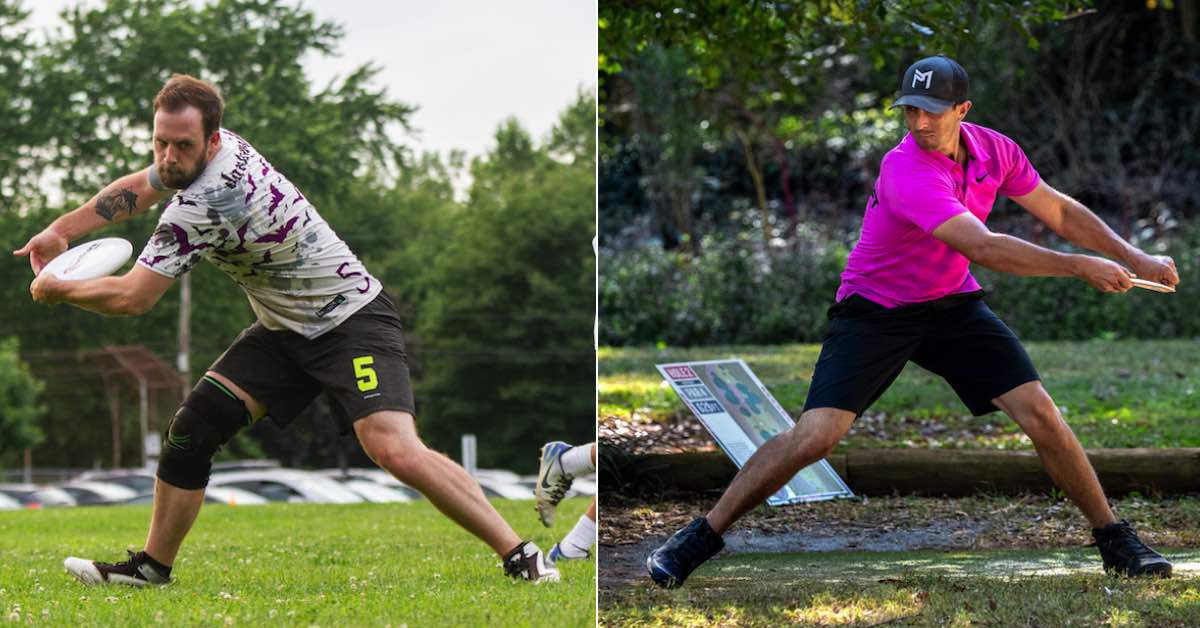
“I generally approach driving and pulling similarly, especially comparing my hyzer drives with my pulls,” said Jenna Weiner, who is on the Western Ultimate League Board of Directors and has been playing ultimate for nine years and disc golf recreationally for 15. “The run-up is similar and since ultimate discs want to flip to flat and float, you have to put a fair amount of hyzer on them to get max distance on a pull. As for throwing with a run-up, I think it changes how much you’re able to engage your hips to rotate when with ultimate and stand-still throwing it often requires more focused core support than with a run-up."
Though, as Weiner noted, pulling and teeing off have a lot of similarities, there is a habit ultimate players will have to change when they're going for disc golf distance: releasing discs nose up.
“I approach drives off the tee pretty similarly to pulling in ultimate, taking a lot of power from the X-step and internal rotation to drive the disc forward,” said Ryan Turner, an elite player for Boston Slow White and professional for Boston Glory. “The main difference I have to focus on is release angle and keeping the nose from rising up on me too much”.
The way disc golf discs fly, nose-up releases tend to make them lose most of their energy traveling upward before they fade hard without covering much distance. This is something Sascha Vogel, a collegiate player at BYU, has learned from experience.
“In ultimate, almost every single throw, you need to have a slightly nose up release so the air can get under the disc and lift it enough to float down the field,” Vogel pointed out. “You do that in disc golf, you greatly diminish your distance and accuracy”.
If you tend to throw more inside-out (hyzer) curving pulls, starting off with an understable disc should help you figure out the best form for drives. Whereas if you favor a flat pull, picking a more stable or overstable disc to throw off the tee would likely be better.
These resources can help you on the journey to dialing in your disc golf drives:
Ultimate to Disc Golf: Hitting Lines & Stationary Targets
Another big shift ultimate players have to make when taking up disc golf is increased focus on how their disc arrives at its desired destination and the need for heightened precision to end up in landing areas that aren't running to meet discs.
“When I'm throwing to a teammate in ultimate, I just have to get it in their general area and they can catch it," Vogel said. "In some cases if I'm even a foot off my line when playing disc golf, I'm hitting a tree and scrambling to save par."

Weiner said such differences cause her to have very different mindsets when playing disc golf and ultimate.
“To me, finding and hitting lines is about identifying and anticipating what your disc will do given its flight characteristics and the environment while with throwing to teammates it’s more of anticipating what the person will do and executing well enough for them to get it," Weiner said. “I don’t pick out a line when I’m throwing to a teammate, I throw it to a space they’re going to be, as compared to finding and hitting lines I feel like it’s more of a geometric puzzle that I need to figure out when choosing what disc to throw and what line to pick.”
Luckily, in disc golf you don't have to pivot in different directions to avoid defenders when you throw (though you could find yourself in a bush or behind a tree or two). Still, it will take most ultimate players a little practice to adapt to the release angles and posture required to produce precise disc golf throws.
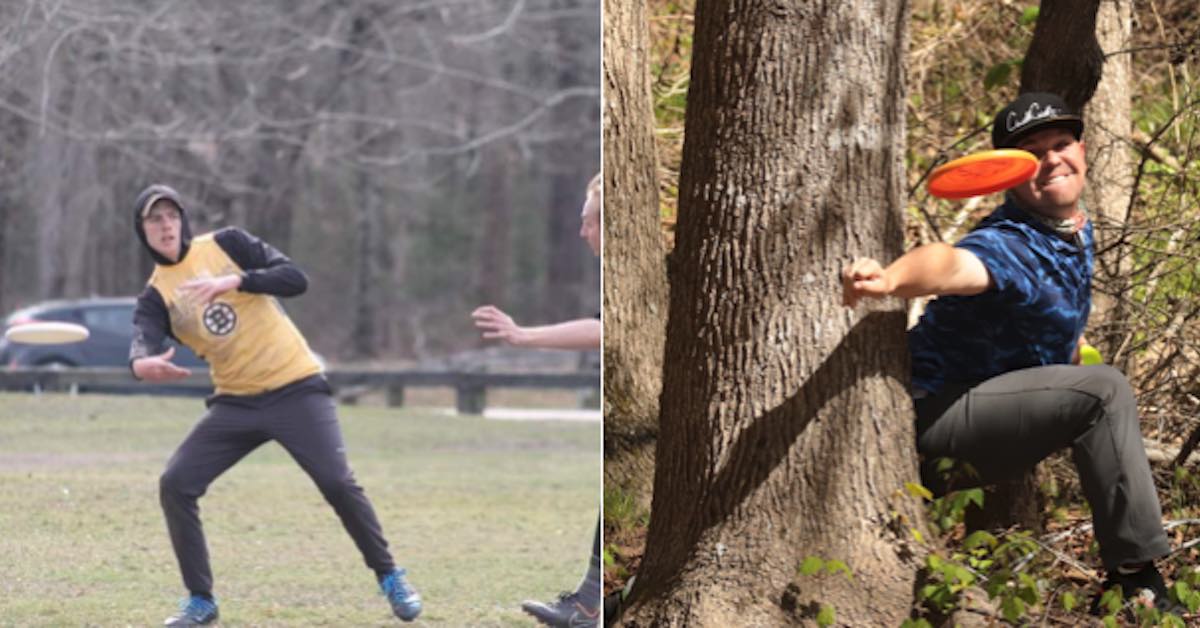
“I've found the biggest difference between throwing angles in ultimate and disc golf is release angles and body control,” Turner said. “You can get away with a lot of different types of throws in ultimate if you're off-balance as long as you're able to control your release angle and wrist snap at the point of release. In disc golf, you have to have a pretty solid base to get a good throw off, and throwing angle is more based on how you angle your body at the point of release and the type of disc you're using.”
It may take a little time to figure out what your body needs to do to make particular discs fly on a particular path, but Tsinajinnie made it clear that putting in that time is well worth it.
“I learned this the hard way, but control is so much more important than power when you are transitioning from ultimate, especially as someone that is a confident handler," Tsinajinnie said. "It is super important to figure out your form first...From there, you can slowly add power and practice different lines with discs that you understand."
Welcome to Disc Golf!

Though you'll have to make a few changes to your throwing mechanics and pick up some new skills, almost all ultimate players – like those who've played baseball or softball – will have a big step up on most people just taking up disc golf. And don't worry, though there may be some slight muscle memory issues at first, bouncing back and forth between the two sports won't damage your game in either long-term.
“I was worried if I used [disc golf throwing mechanics] too much, they would ruin my throwing form or alter it enough to have real impacts in-season," Turner said. "The more I've played now, though, I've found that's not the case, and I realize I can probably get more power on some of my backhand throws, most likely improving my pulls as well."
Or, in the simpler terms Vogel put it in: “Disc golf and ultimate complement each other...take things from each sport and apply it to the other."
If you're looking for places to play, try out UDisc Courses, the most complete disc golf course directory in the world. The directory is also available in the UDisc app, the #1 disc golf app which includes tools to help you keep your score, stats, and plenty more.
